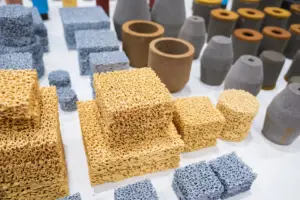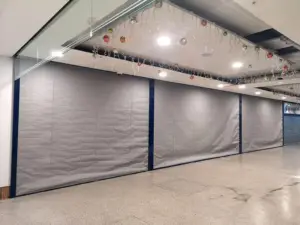Efficient and affordable home heating and cooling are essential for maintaining comfort while managing energy costs. With the myriad options available, selecting the right system can be daunting. This article aims to simplify the decision-making process by providing a comprehensive comparison of cost-effective heating and cooling solutions.
IRBIS HVAC is committed to providing cutting-edge HVAC solutions tailored to your home’s needs. From central systems to ductless mini-splits, we aim to empower homeowners with informed choices. Join us as we explore various heating and cooling systems, weighing their pros and cons and uncovering energy efficiency and potential savings. Our guide will help you create a comfortable, energy-efficient home whether you face cold winters or hot summers.

Overview of Home Heating and Cooling Systems
Home heating and cooling systems come in various types, each with unique features and benefits tailored to different needs. Here’s a brief overview of the main categories:
Central Heating and Cooling Systems
Central HVAC systems utilize ducts to distribute air throughout the home. Typically, they include a furnace or boiler for heating and an air conditioner for cooling. These systems are ideal for larger homes and require professional installation and regular maintenance.
Ductless Mini-Split Systems
Ductless mini-split systems consist of an outdoor unit connected to one or more indoor units without ductwork. Each indoor unit operates independently, providing customized comfort in different home areas. These systems are energy-efficient, easy to install, and perfect for homes without existing ductwork or room additions.
Heat Pumps
Heat pumps provide heating and cooling by transferring heat indoors and outdoors. They extract heat from the air or ground outside during winter for heating and reverse the process during summer for cooling. While highly energy-efficient, their performance may vary in extremely cold climates.
Radiant Heating Systems
Radiant heating systems deliver heat directly to floors, walls, or ceilings. They can be powered by electricity, hot water, or air, providing even, comfortable warmth throughout the space. Although energy-efficient and quiet, installation costs can be higher, especially for existing homes.
Evaporative Coolers
Evaporative coolers, also known as swamp coolers, use evaporation to cool the air by drawing warm air through water-soaked pads. These systems are cost-effective and energy-efficient, particularly in dry climates. However, they may be less effective in humid conditions and require a constant water supply.
Understanding the different types of heating and cooling systems allows homeowners to make informed decisions based on their specific needs, preferences, and budget constraints.
Like Us on Facebook!
Cost-Effective Heating Options
Several options are available for heating your home efficiently and affordably. Let’s analyze three popular heating methods: High-Efficiency Furnaces, Heat Pumps, and Radiant Floor Heating.
Subscribe Us on YouTube!
High-Efficiency Furnaces
Pros
- High energy efficiency, converting up to 98% of fuel into heat.
- Significant reduction in heating costs due to efficient operation.
- Reliable and consistent performance ensures comfort throughout the home.
Cons
- Higher upfront cost compared to conventional furnaces.
- Requires regular maintenance to maintain efficiency and performance.
Energy Efficiency and Savings
- High-efficiency furnaces can significantly lower energy bills, especially in colder climates. While the initial investment may be higher, the long-term savings offset this cost over time.
Heat Pumps
Pros
- Dual functionality, providing both heating and cooling.
- High energy efficiency, particularly in moderate climates.
- Lower operating costs compared to traditional heating systems.
Cons
- Reduced efficiency in extremely cold temperatures.
- Higher upfront installation cost compared to some other options.
Energy Efficiency and Savings
- Heat pumps offer up to 300% efficiency, resulting in substantial energy savings, especially in mild winters. While initial costs may be higher, long-term savings justify the investment.
Radiant Floor Heating
Pros
- Uniform heating distribution throughout the home.
- Silent operation enhances comfort.
- Energy-efficient and provides comfortable warmth.
Cons
- High installation cost, especially in existing homes.
- Slow response time to temperature adjustments compared to forced-air systems.
Energy Efficiency and Savings
- Radiant floor heating directly heats the floor and occupants, maximizing efficiency. Though installation costs may be higher initially, the long-term energy savings and comfort make it a cost-effective option.
By carefully weighing the pros and cons of each heating option and considering their energy efficiency and potential savings, homeowners can choose the most cost-effective solution for their needs.
Cost-Effective Cooling Options
Cooling your home efficiently and affordably is crucial, especially during the hot summer. Let’s explore three popular cooling methods: High-Efficiency Air Conditioners, Heat Pumps, and Evaporative Coolers.
High-Efficiency Air Conditioners
Pros
- High energy efficiency, cooling homes effectively with less energy consumption.
- Significant reduction in cooling costs due to efficient operation.
- Consistent and reliable performance ensures comfort throughout the home.
Cons
- Higher upfront cost compared to standard air conditioners.
- Requires regular maintenance to maintain efficiency and performance.
Energy Efficiency and Savings
- High-efficiency air conditioners produce substantially lower energy bills, particularly in hot regions. Although the initial investment may be higher, the long-term savings outweigh this cost.
Heat Pumps for Cooling
Pros
- Dual functionality, providing both heating and cooling.
- High energy efficiency, especially in moderate climates.
- Lower operating costs compared to traditional cooling systems.
Cons
- Reduced efficiency in extreme temperatures, both hot and cold.
- Higher upfront installation cost compared to some other options.
Energy Efficiency and Savings
- Heat pumps offer up to 300% efficiency, resulting in significant energy savings, particularly in moderate climates. While the initial costs may be higher, the long-term savings justify the investment.
Evaporative Coolers
Pros
- Low energy consumption, cooling the air through evaporation.
- Cost-effective option, especially in dry climates.
- Simple and inexpensive installation and maintenance.
Cons
- Less effective in humid climates where the air is already saturated with moisture.
- Requires a steady supply of water for operation.
Energy Efficiency and Savings
- Evaporative coolers use less electricity than traditional air conditioners, making them energy-efficient. They are most effective in arid regions, providing substantial savings in electricity costs.
By carefully evaluating the pros and cons of each cooling option and considering their energy efficiency and potential savings, homeowners can select the most cost-effective solution for their needs.
Dual-Function Systems
Dual-function systems combine heating and cooling capabilities in a single unit. Two popular options are heat pumps and ductless mini-split systems.
Heat Pumps
Heat pumps transfer heat from the air or ground outside to indoors for heating. In the summer, they reverse this process, removing indoor heat and releasing it outside for cooling.
Ductless Mini-Split Systems
Ductless mini-split systems have an outdoor compressor unit connected to one or more indoor air-handling units. They provide heating and cooling by transferring heat between the outdoor and indoor units using refrigerant.
Advantages of Dual-Function Systems
Dual-function systems offer year-round convenience by providing seamless transitions between heating and cooling, eliminating the need for separate systems. Combining heating and cooling functions into a single unit saves on installation costs compared to individual systems. These systems, such as heat pumps and ductless mini-splits, are highly energy-efficient, offering significant energy savings compared to traditional systems. Additionally, ductless mini-split systems allow for individualized temperature control in different home areas, enhancing comfort and energy efficiency by only heating or cooling occupied spaces.
Overall, dual-function systems provide the convenience of year-round comfort, cost savings, and energy efficiency. Homeowners seeking an efficient solution for both heating and cooling should consider these versatile systems.
Energy Efficiency and Environmental Impact
Energy efficiency in heating and cooling systems is crucial for lower energy bills and environmental benefits.
Energy Efficiency Importance
Efficient systems use less energy to maintain comfort, reducing energy consumption and utility bills. This benefits homeowners financially, eases the strain on the energy grid, and decreases reliance on fossil fuels.
Environmental Benefits
Energy-efficient systems offer environmental advantages by lowering greenhouse gas emissions, which helps mitigate climate change. They also conserve natural resources by minimizing energy extraction and consumption.
Comparison of Carbon Footprints
Heating and cooling systems vary in carbon footprints based on energy source and efficiency. High-efficiency furnaces powered by natural gas or propane have moderate carbon footprints. Heat pumps and ductless mini-split systems powered by electricity generally have lower to moderate footprints, especially if the electricity comes from renewable sources. Traditional air conditioners tend to have higher carbon footprints because they rely on electricity and are less efficient.
Homeowners can significantly reduce their environmental impact by prioritizing energy efficiency and choosing systems with lower carbon footprints while enjoying cost savings and enhanced comfort.
Maintenance and Longevity
Proper maintenance is key to the efficiency and longevity of heating and cooling systems. Here’s an overview:
Maintenance Requirements
- High-Efficiency Furnaces. Annual inspections, filter replacements every 1-3 months, and periodic cleaning of burners and heat exchangers.
- Heat Pumps. Monthly filter checks, outdoor coil cleaning, debris clearance, and biannual professional servicing.
- Ductless Mini-Split Systems. Monthly filter cleaning, outdoor unit, refrigerant level checks, and annual professional servicing.
- Radiant Floor Heating. Periodic leak checks for hydronic systems, thermostat and electrical inspections, and annual professional inspections (more frequent for hydronic).
- Evaporative Coolers. Seasonal pad cleaning, water tank maintenance, mold checks, and pre-season professional inspections.
Longevity and Durability
- High-Efficiency Furnaces. 15-20 years
- Heat Pumps. 10-15 years
- Ductless Mini-Split Systems. 12-15 years
- Radiant Floor Heating. 20-35 years for hydronic systems, 15-25 years for electric systems
- Evaporative Coolers. 15-20 years
Cost of Maintenance Over the System’s Lifetime
- High-Efficiency Furnaces. Annual costs $100-$200, lifetime $1,500-$4,000
- Heat Pumps. Annual costs $150-$300, lifetime $1,500-$4,500
- Ductless Mini-Split Systems. Annual costs per unit $100-$200, lifetime per unit $1,200-$3,000
- Radiant Floor Heating. Annual costs are $100-$300 for hydroponics and minimal for electric ones. Lifetime $2,000-$5,000 for hydronic, $500-$1,500 for electric.
- Evaporative Coolers. Annual costs $80-$150, lifetime $1,200-$3,000
Regular maintenance ensures efficient operation and longevity, balancing initial investment with long-term performance for consistent comfort and cost savings.
Making the Right Choice for Your Home
When selecting a heating and cooling system, consider these key factors:
Climate suitability is crucial, as high-efficiency furnaces are ideal for cold climates, while heat pumps are better for moderate ones. The system’s capacity should match your home’s size, and proper insulation is essential for optimizing efficiency. Evaluating upfront and long-term costs, including installation and maintenance expenses, is important to stay within your budget. Additionally, personal preferences such as zoning capabilities, noise levels, and aesthetics should be considered to ensure the system meets your needs.
Tips for Maximizing Efficiency and Savings
To maximize efficiency and savings, choose energy-efficient systems by looking for high SEER ratings for cooling and high AFUE ratings for heating. Regular maintenance is essential; schedule routine check-ups to ensure optimal performance and longevity of your systems. Upgrading insulation can significantly reduce energy consumption while installing programmable thermostats, which help regulate temperatures efficiently. Optimize system usage by utilizing ceiling fans and natural heating and cooling strategies. Additionally, consider integrating renewable energy sources like solar panels for sustainable power.
By considering these factors and tips, homeowners can select a heating and cooling system that meets their needs while maximizing efficiency and savings.
Conclusion
Choosing cost-effective heating and cooling solutions is crucial for homeowners seeking comfort, affordability, and sustainability. Throughout this exploration, we’ve emphasized tailoring systems to match specific needs, from climate requirements to budget constraints. We’ve delved into various systems, dissecting their advantages, drawbacks, and potential for energy savings. Whether it’s the reliability of high-efficiency furnaces or the versatility of ductless mini-splits, each option offers distinct benefits.
In this journey, IRBIS HVAC emerges as a reliable provider of innovative solutions. With a commitment to cutting-edge technology and personalized service, we empower homeowners to make informed decisions about their HVAC needs. Contact IRBIS HVAC for expert guidance and tailored services, prioritizing comfort, affordability, and environmental responsibility.



















